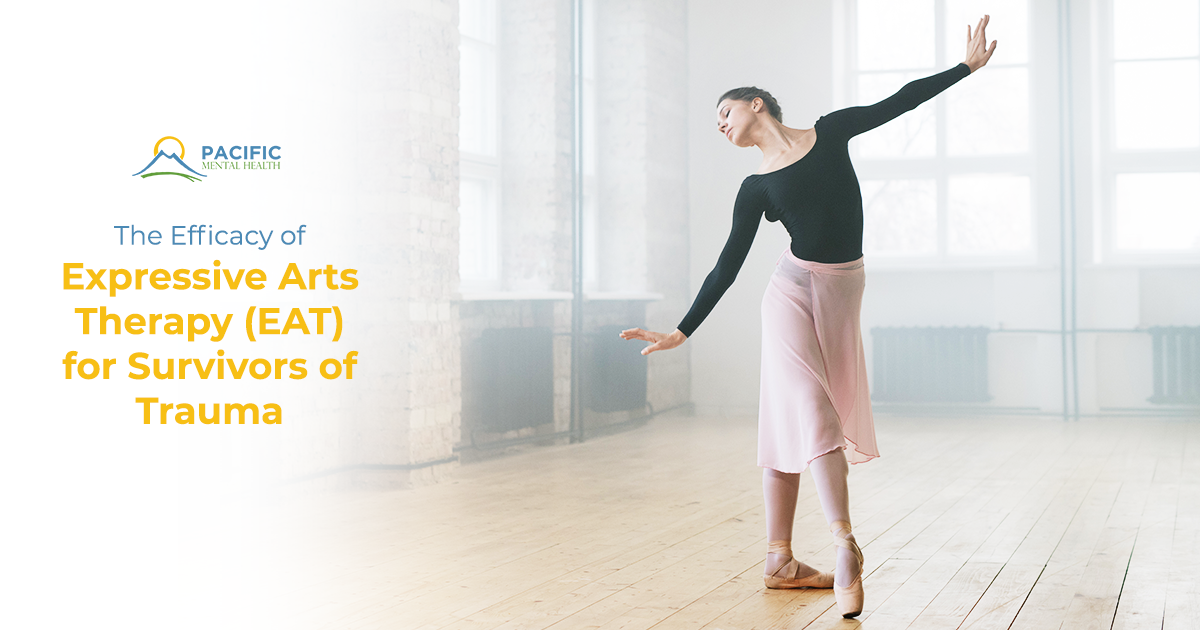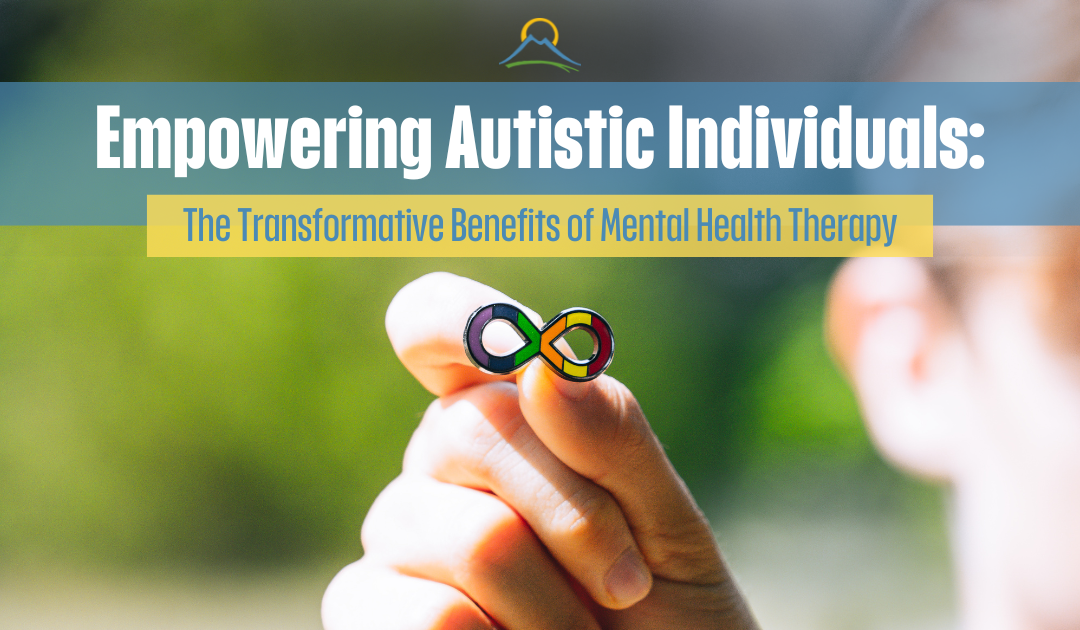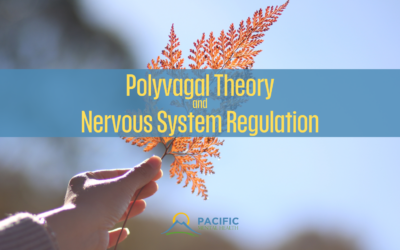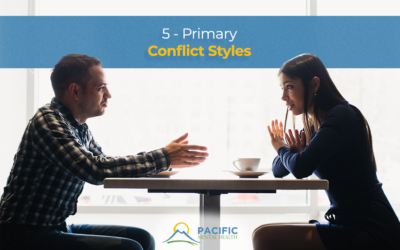There is a funny little acronym in the therapy world called EAT, and it doesn’t mean what you might imagine! Instead of a tall stack of pancakes, or a meatless or meaty burger, imagine a painting, a dance, a song, or poem that expresses feelings, stories, and even…trauma.
EAT stands for Expressive Arts Therapy, which is a growing method in the field of mental health counseling for the past 60+ years. This article will focus on three key areas of EAT: Defining what exactly is EAT, the potential value of creative arts-based interventions for survivors of and recovery from trauma/PTSD, and how the timing of introducing EAT is important in the therapeutic process.

Defining Expressive Arts Therapy (EAT)
Through creative expression of painting/drawing/imagery, music, writing, and movement, EAT is used in tandem with traditional talk therapy. “Expressive arts therapy is distinguished from other modes of therapeutic practice by its emphasis on bodily expression. It is the body that dances, sings, makes music, paints, sculpts, enacts scenes and speaks poetically” (Meyer, 1999, p. 245).
The best part is, EAT does not require us to be skilled artists! Anna Halprin called this process “low skill, high sensitivity” (Personal Communication, October 14, 2014). What matters is that we bring ourselves through our expression; this allows us to gather unconscious information we might not otherwise consciously engage with. “Trauma lives in the cells of the body.
To be fully present and alive in the body means being in touch with the pain, facing it, and integrating the story behind the pain with the rest of one’s life story” (Meyer, 1999, p. 246). Expressing our painful stories through creativity makes way for the voice that is aching to be known, integrating our pain into hope.
Creativity as Profound Healer:
EAT for survivors of and recovery from trauma/PTSD
According to research, the arts can be used therapeutically with clients who are hesitant to discuss their trauma; talk therapies may threaten clients impacted by abuse by remembering the trauma, discussing it and reactivating it. Difficulty verbalizing client’s experiences or finding the right words can often be safely replaced through creative interventions, allowing a secure place for the emotions to be expressed symbolically and indirectly. (Dollinger et al., 2011; Ikonomopoulos et al., 2017; Murray et al., 2017).
Evidence-based practice for trauma requires the client to bravely encounter a corrective distance from the trauma, yet close enough to meet the trauma’s edge without re-traumatization. Agency is then returned to the client as they grow greater tolerance and resilience around the trauma event, re-integrating their core self (Antioch Professor “F,” personal communication, March 2021). The recovery process is not linear in function and takes great patience. Like any grieving process, it is two steps forward, sometimes four steps back, until the client feels strong and able to respond to life situations not dictated by their past trauma.

Understanding the feedback process between creativity and feelings is an essential ingredient of expression, where our creative selves and bodies become vehicles for releasing, even befriending, complicated feelings essential to the healing process (Halprin, 2000). EAT can reconnect clients out of the unintended isolation that trauma incurs, returning them to their bodies, their full expression of life, and back into their communities.
Risks and Benefits of EAT Interventions
The potential risks that EAT therapists and clients must be sensitive and cautious with are twofold: The timing of introducing creative interventions in the therapeutic process and the kind of creative interventions. For example, journaling alone might not be as effective as journaling and processing with others, and the therapist (Ikonomopoulus et al., 2017). Additionally, both the client and therapist must dialogue about and consider the trauma experience’s intensity to dictate which interventions are needed and when to introduce them (Antioch professor “C,” personal communications, 2022).
In a case where the client is experiencing acute nervous system dysregulation/anxiety, therapists refrain from introducing cathartic movement games or music making (Antioch professor “C,” personal communications, 2022). This is why EAT practitioners must be rigorously trained to establish safety and keep boundaries intact, as different practices yield different results.
Expressive arts therapy’s creative interventions can get right to the heart of the matter, as creativity helps bypass how people learn to protect themselves through talking. Successful EAT centers the client by promoting their own agency and creative will in a non-threatening environment.
Conclusion
When trauma, or any life transition, is too painful to speak of, expressive arts therapy helps clients make sense of their pain, reconnect to their core selves, and reduce isolation through sharing their creative expression and unique inner world. Despite the potential pitfalls and risks that EAT therapists must be sensitive to, EAT is a highly effective and profound therapeutic method for trauma survivors; it re-integrates self-concept, self-awareness, confidence and can return us to a greater ease of living where we once thought ease was not possible!
References
- Dollinger, S., Kazmierczak, E., & Storkerson, P. (2011). Creativity and self-exploration in projective drawings of abused women: Evaluating the Inside Me–Outside Me workshop. Journal of Creativity in Mental Health, 6(3), 202–219. https://doi.org/10.1080/15401383.2011.607094
- Halprin, A. (2002). Returning to health: with dance, movement, and imagery. Life Rhythm.
- Ikonomopoulos, J., Cavazos-Vela, J., Vela, P., Sanchez, M., Schmidt, C., & Catchings, C.V. (2017). Evaluating the effects of creative journal arts therapy for survivors of domestic violence. Journal of Creativity in Mental Health, 12(4), 496-512. https://doi.org/10.1080/15401383.2017.1328290
- Meyer, M.A. (1999). In exile from the body: Creating a ‘play room’ in the ‘waiting room.’ In E.G. Levine & S.K. Levine (Eds.), Foundations of expressive arts therapy: Theoretical and Clinical Perspectives. (6th ed., pp. 244-246). Jessica Kingsley Publishers Ltd.
- Murray, C. E., Moore Spencer, K., Stickl, J., & Crowe, A. (2017). See the Triumph Healing Arts workshops for survivors of intimate partner violence and sexual assault. Journal of Creativity in Mental Health, 12(2), 192–202. https://doi.org/10.1080/15401383.2016.1238791








0 Comments